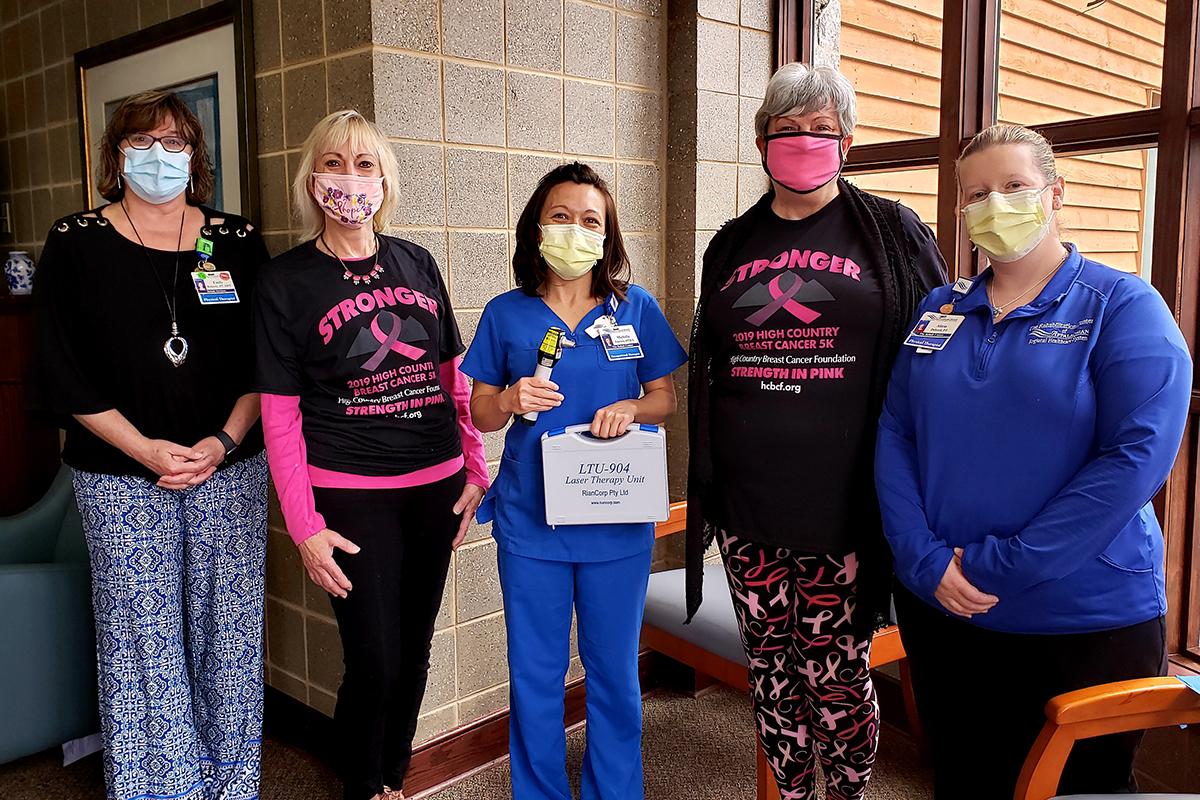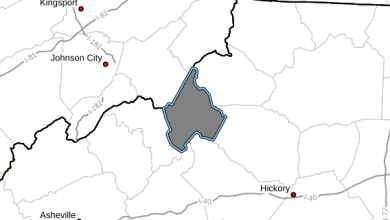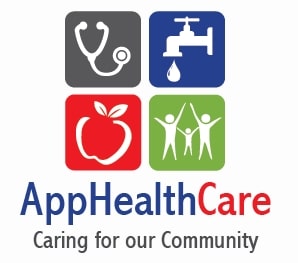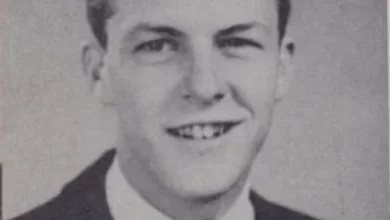
Last Updated on March 26, 2022 2:43 pm
BOONE, NC (November 18, 2020) – The Rehabilitation Center, the outpatient physical and occupational therapy arm of Watauga Medical Center, received a donation of a Low Level Laser Therapy (LLLT) device from the High Country Breast Cancer Foundation last week. The American Food and Drug Administration has cleared this device – the Riancorp LTU-904 laser therapy unit – as a tool to be used in the treatment of postmastectomy lymphedema.
Founded in 2017 by breast cancer survivor Irene Sawyer, the mission of the High Country Breast Cancer Foundation is to support breast cancer patients, survivors, and their families in the High Country of North Carolina. All of the funds raised by the HCBCF go to helping local patients.
“We are honored to be able to provide this device to The Rehabilitation Center,” said Sawyer. “It gives the High Country Breast Cancer Foundation a chance to show the community how their donations are being used to improve the lives of our community members impacted by breast cancer.”
What is postmastectomy lymphedema?
During breast cancer surgery (mastectomy or lumpectomy), some of the lymph nodes in the underarm may be removed and checked to see if they contain cancer cells. When lymph nodes are removed from the underarm area during breast surgery or treated with radiation therapy, lymphatic vessels can become blocked or compromised, preventing lymph fluid from circulating out of the area. Lymphedema occurs when this fluid collects in the arm, underarm, chest, breast or back, causing swelling, pain, and other problems. The body’s natural process of scarring at the surgical incision lines and from radiation further increases the risk of lymphedema. This condition may occur directly after surgery and oncology treatment course, or months later.
According to The Rehabilitation Center’s certified lymphedema therapist Michelle Forrest, the percentage of lymphedema occurrence following mastectomy and lymph node removal varies depending on the source, however the average is between 20-50%.
The risk increases with the number of nodes surgically removed, however the good news is that there are preventive strategies and therapies available that can reduce occurrence. The Rehabilitation Center has four therapists who have been specially trained to provide lymphedema management.
How does postmastectomy lymphedema impact a breast cancer survivor’s life?
Lymphedema impacts a survivor’s life in many ways:
- Having a heavier limb can cause pain and physical discomfort.
- Clothing can be too tight on the affected arm.
- The affected arm may have range of motion limitations from scarring and decreased flexibility if the lymphedema is not treated.
- There is also risk of skin breakdown and a higher risk of infections if left untreated.
How does LLLT improve the lives of cancer Survivors?
“With use of this Low Level Laser device, we will be able to shorten recovery time, reduce painful scarring, increase range of motion of the affected side, and soften hardened tissue at the mastectomy site,” said Forrest. “This will allow the patient to return to work, childcare, full movement of the affected side and experience return to normal sensation.”
Forrest continued, “As a Lymphedema Therapist, it is amazing to help a breast cancer patient take control of yet another aspect of their life that was afflicted during their journey.” With use of the Low Level Laser in conjunction with manual therapy techniques, each survivor will have an opportunity to return to full arm function and flexibility. The risk of further scarring and pain is greatly reduced over time so they may return to gardening, sports, swimming, pottery, playing with grandchildren and all of the other joys in life.
For information regarding a Lymphedema Consultation (pre or post-surgery) or information on treatment with this device – please contact Michelle Forrest, OTD, CLT-LANA, at The Rehabilitation Center, (828) 268-9043, or request an appointment online at https://apprhs.org/appointment/.



















